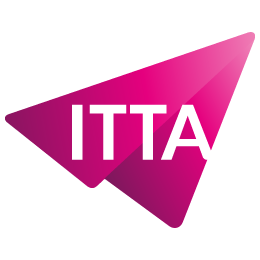Home > Trainings > Development > Web Development > HTML5 and CSS3 – Fundamentals
The HTML5 and CSS3 training provides the essential foundations to design and style modern web pages. Accessible and progressive, it guides you step by step to understand the key concepts of the HTML language and to discover the power of CSS style sheets. You will learn how to structure your content, manage visual elements, and make your websites clearer and more engaging. Each module is designed to develop your skills with concrete examples and practical exercises.
Why learn HTML5 and CSS3 today
Web development relies on solid foundations. HTML5 and CSS3 are the cornerstone for anyone wishing to design reliable and well-structured websites. This HTML5 and CSS3 training gives you a clear and effective method. You will understand how to organize your documents, integrate images, create tables or simple forms. You will also discover how CSS styles enhance the look of web pages, improve readability, and create a better user experience.
Module 1: Introduction and Basics
Module 2: HTML Lists
Module 3: HTML Tables
Module 4: URLs, Links and Iframes
Module 5: HTML and Images
Module 6: Introduction to CSS and Basics
Module 7: CSS Selectors
Module 8: CSS Dimensions
Module 9: CSS Box Model
Module 10: CSS Lists, Text, Fonts and Tables
The HTML5 and CSS3 training is part of learning the foundations of web development. These two languages are complementary. HTML5 structures the content while CSS3 provides style and layout. Mastering them is the first step toward creating efficient and modern websites. Today, no digital project can ignore these standards, as they ensure compatibility and accessibility across all browsers and devices.
A website is not limited to displaying text and images. Its value depends on the quality of its structure and readability. Learning HTML5 helps organize information in a hierarchical and understandable way, both for users and for search engines. A well-built page also benefits from better SEO indexing. Developers quickly discover that code clarity directly impacts online visibility.
Knowing the essential tags, understanding their role, and knowing how to combine them are key skills. This training emphasizes practical techniques used by industry professionals. The focus is on semantics, an aspect often overlooked by beginners. Using the right tags not only improves accessibility but also ensures long-term scalability of websites.
The appearance of a site has a direct impact on user experience. CSS3 allows control over dimensions, margins, colors, fonts, and much more. This training explains how to style a page effectively, but also how to use the box model to structure a professional layout. Students learn to design harmonious interfaces that adapt to the expectations of today’s internet users.
Mastering HTML5 and CSS3 opens the door to other skills. Understanding the role of these languages makes it easier to learn JavaScript, modern frameworks, and content management systems. For a developer or project manager, it is an essential step toward building dynamic websites or complete web applications. This training therefore provides lasting value and represents an investment in one’s professional future.
A well-designed website must offer simple and intuitive navigation. Participants learn how to link multiple pages, add bookmarks, or insert menus. These concepts, essential for site structure, are also important for SEO. Search engines favor well-linked and coherent websites. Understanding these principles helps design strong web architectures.
HTML attributes such as Alt or Title play a major role in accessibility. They make a site readable for screen readers and improve its SEO. The training emphasizes these best practices, often underestimated. An accessible site reaches a wider audience and benefits from better ranking on Google. Integrating CSS also enhances perceived quality by improving readability and visual organization.
Web development is a constantly evolving field, but its foundations remain unchanged. Recruiters strongly value candidates who master HTML5 and CSS3. These skills are sought after in many professions: front-end developer, webmaster, integrator, or digital consultant. Taking this training therefore strengthens employability and opens the door to new professional opportunities.
Are HTML5 and CSS3 enough to build a modern website?
Yes, these languages make it possible to design complete static sites. For interactive sites, JavaScript will be required.
What is the difference between HTML5 and CSS3?
HTML5 is used to structure content. CSS3 is used to format and style web pages visually.
Is this training suitable for complete beginners?
Yes, it does not require any prior programming experience. Basic computer knowledge is enough to get started.
What career opportunities are there after this training?
It is a first step toward web-related professions. It is particularly useful for beginner developers and webmasters.

Nous utilisons des cookies afin de vous garantir une expérience de navigation fluide, agréable et entièrement sécurisée sur notre site. Ces cookies nous permettent d’analyser et d’améliorer nos services en continu, afin de mieux répondre à vos attentes.
Monday to Friday
8:30 AM to 6:00 PM
Tel. 058 307 73 00
ITTA
Route des jeunes 35
1227 Carouge, Suisse
Monday to Friday, from 8:30 am to 06:00 pm.